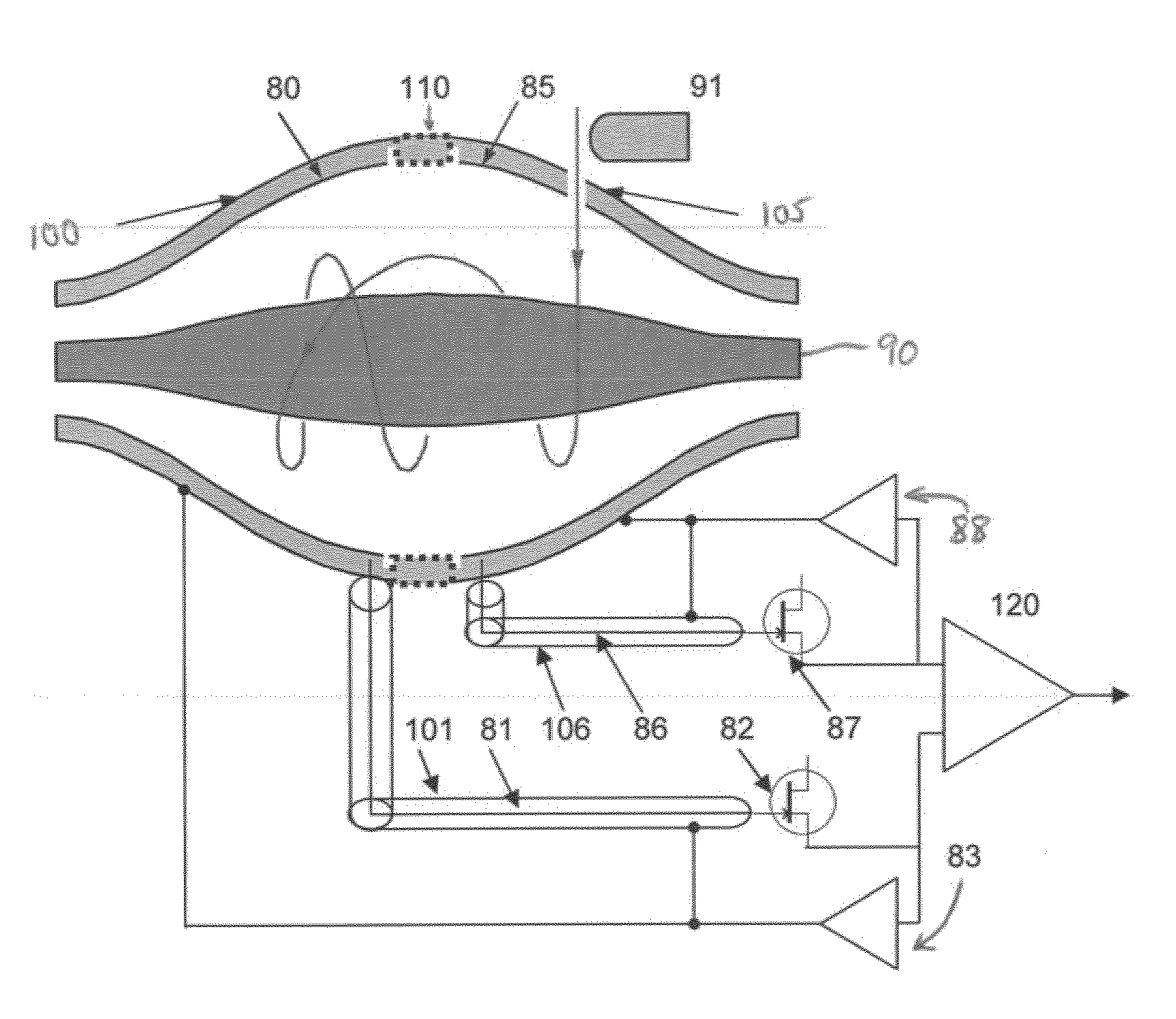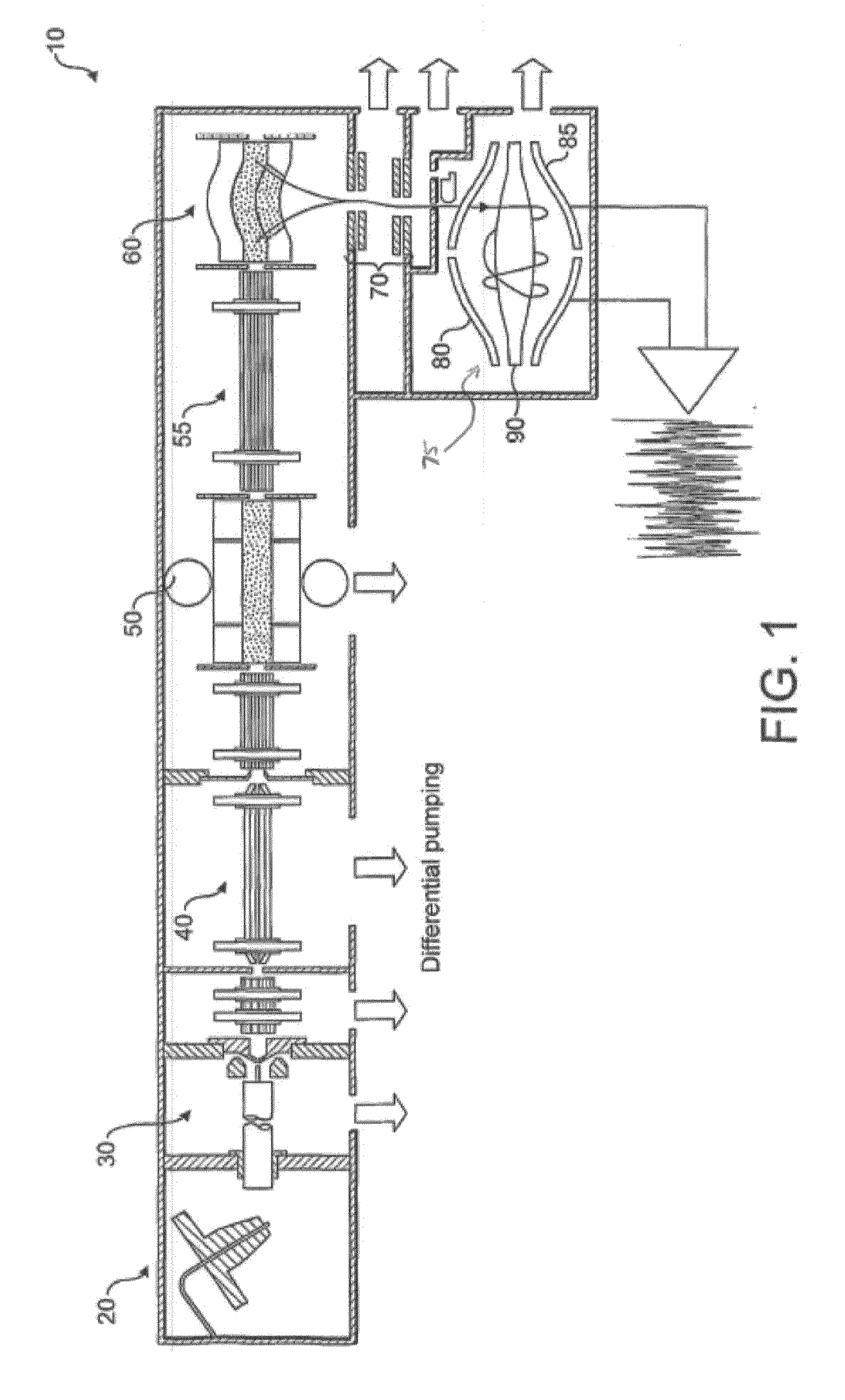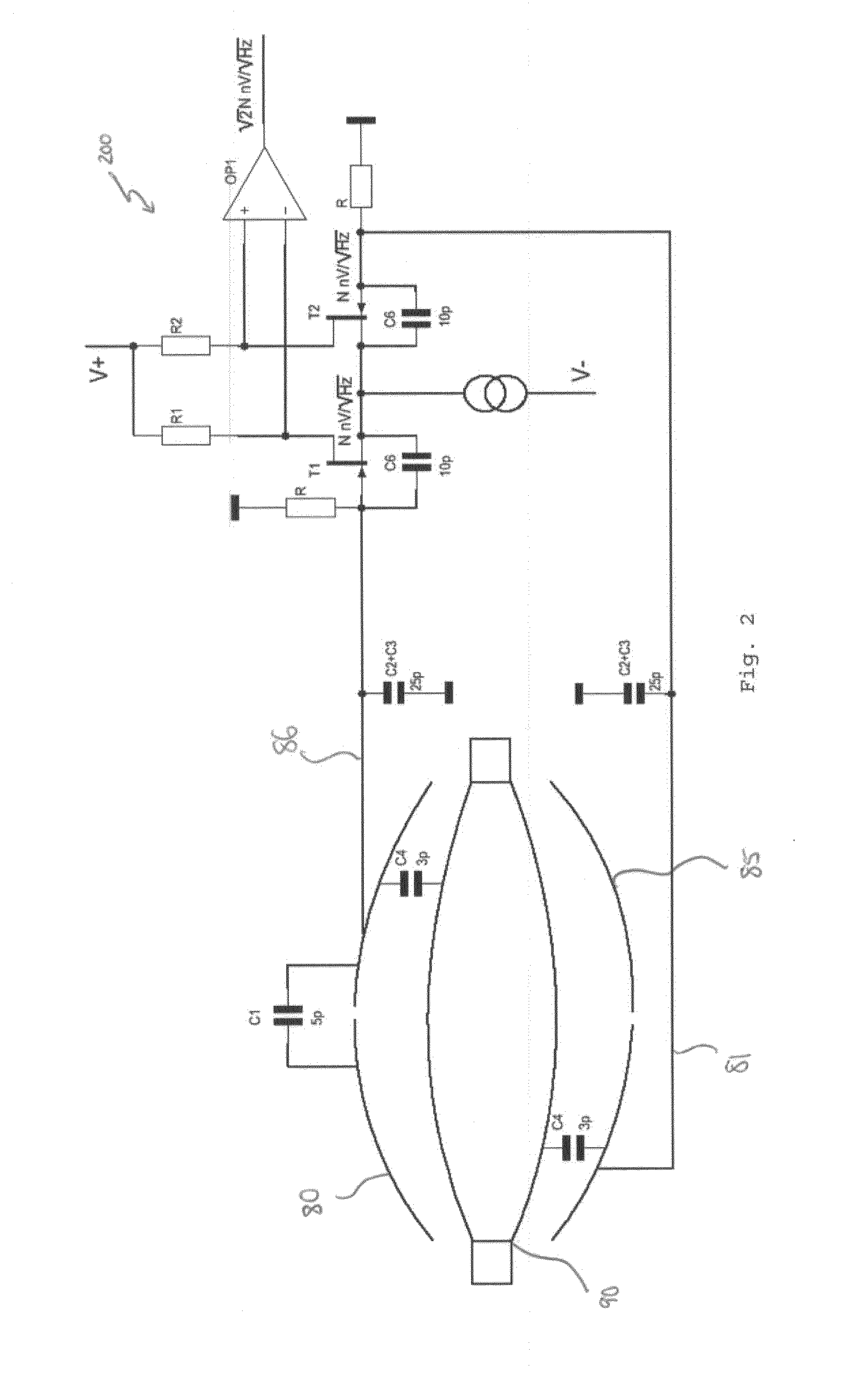Ion Detection
a mass analyser and ion detection technology, applied in the direction of instruments, particle separator tube details, optical radiation measurement, etc., can solve the problem of affecting the signal-to-noise ratio of the preamplifier output signal, and achieve the effect of reducing the capacitance and reducing the overall power spectral density of nois
- Summary
- Abstract
- Description
- Claims
- Application Information
AI Technical Summary
Benefits of technology
Problems solved by technology
Method used
Image
Examples
first embodiment
[0067]Referring next to FIG. 3, an ion detection arrangement according to the present invention is shown. The embodiment shown in FIG. 3 is based on that of FIG. 2, but with a number of significant changes. This embodiment exemplifies a way of detecting the image current signals. Features that are the same as those shown in FIG. 1 or 2 are identified by identical reference numerals.
[0068]In this case, outer electrodes 80 and 85 are made preferably from a clear or high-ohmic glass with a low temperature expansion coefficient. It is metallised (that is, metal coated) in such a way that the outer coating is not connected to the inner coating forming electrodes 80 and 85 but forms a first conductive surface 100 and a second conductive surface 105, each surrounding electrodes 80 and 85, correspondingly and thereby acting as shields. These surfaces 100, 105 could have a gap between them or, optionally, this gap could be covered by a high-ohmic resistive layer 110 (total resistance prefera...
second embodiment
[0078]Referring now to FIG. 5, there is shown a pre-amplifier according to the present invention for use with the ion detection arrangement of FIG. 4. The pre-amplifier 300 is similar to the pre-amplifier 120 shown in FIG. 4. However, it also includes additional features to compensate for the input capacitance of the pre-amplifier.
[0079]A signal with the same amplitude and phase as the input signal to the preamplifier from first detection electrode 80 is connected to the drain of the FET transistor T4 that is part of the first voltage follower 130. Similarly, a signal with the same amplitude and phase as the input signal to the preamplifier from second detection electrode 85 is connected to the drain of the FET transistor T3 that is part of the second voltage follower 135. This means that all three terminals of the transistor for each voltage follower have the same AC voltage and virtually no input capacitance between the terminals.
[0080]This is achieved by taking the signal applied...
third embodiment
[0082]Further reductions in capacitance can be achieved by means other than compensation. Referring next to FIG. 6, there is a shown an electrostatic trap mass analyzer according to the present invention. This shows the electrostatic orbital trapping-type of the mass analyzer shown in FIGS. 1 to 4, but with an additional feature. A conductor, here formed as a metal ring 140, is installed between the first detector electrode 80 and the second detector electrode 85. The gap between the metal ring 140 to each of electrodes is the same and the metal ring 140 is connected to voltage supply 145. The voltage supply 145 is preferably external.
[0083]Typically, a few hundred volts are applied to the metal ring 140 in order to get the field inside the mass analyser correct. This voltage is desirably static during detection, but could be switchable at other times. Preferably, this voltage has a ripple below a few (1, 2 or 3) millivolts and preferably within a frequency range below 100 to 200 kH...
PUM
 Login to View More
Login to View More Abstract
Description
Claims
Application Information
 Login to View More
Login to View More - R&D
- Intellectual Property
- Life Sciences
- Materials
- Tech Scout
- Unparalleled Data Quality
- Higher Quality Content
- 60% Fewer Hallucinations
Browse by: Latest US Patents, China's latest patents, Technical Efficacy Thesaurus, Application Domain, Technology Topic, Popular Technical Reports.
© 2025 PatSnap. All rights reserved.Legal|Privacy policy|Modern Slavery Act Transparency Statement|Sitemap|About US| Contact US: help@patsnap.com



